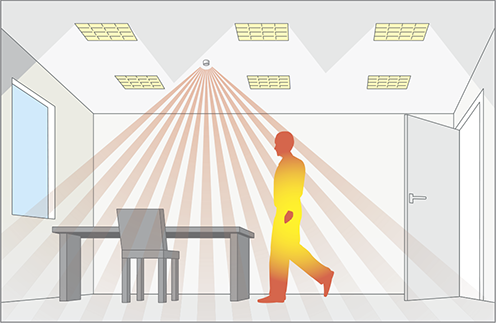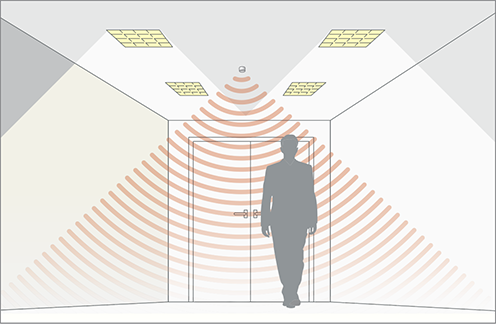PIRs and Microwave Detectors Compared
 PIR Detectors
PIR Detectors
PIR (Passive Infrared) presence detectors detect body heat and movement and are ideally suited to smaller spaces where a defined detection pattern is required. Due to this, they are less sensitive in comparison to microwave detectors as the heat must cross the sensor’s beams. This also means that they are less likely to be falsely triggered by anything other than a human, making them ideal for most spaces like an office where people are moving around triggering the sensor.
 Microwave Detectors
Microwave Detectors
Microwave presence detectors are sensitive to movement and are ideal for large spaces and areas that have an awkward shape or where fine motion detection is required. They can also detect through glass, therefore careful consideration on location is needed in certain applications.
Microwave detectors are much more sensitive than PIRs because they use the "Doppler Effect" to detect movement. This is where they send out high frequency radio waves and when there is a disturbance they detect movement. This means they are great for detecting small pieces of movement or movement from a further distance away. However, it also means they will detect other things like a fan or running water. Microwave detectors are best used in corridors and large classrooms, for example, as a door opening to a corridor the lights will turn on before you’re there, or a single person in the corner of a classroom would be sensed.
Our solutions
CP Electronics offers a broad range of both PIR and Microwave detectors. Our EBDMR has a large coverage for when requiring a PIR or our MWS6 offers a more sensitive approach when looking to best utilise lighting controls in a corridor environment.